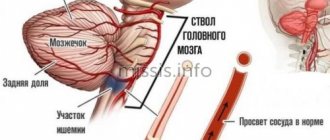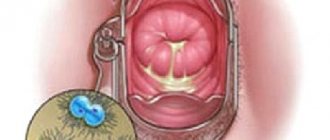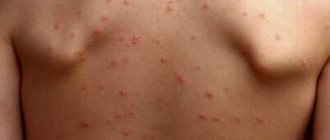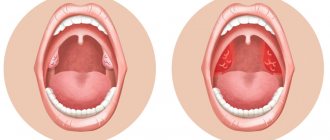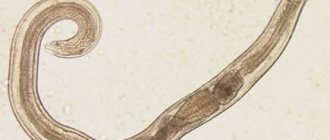American scientists from Yale University Medical School have found that rhinovirus infection can protect against influenza infection. The study was published in the peer-reviewed medical journal The Lancet.
A group of scientists studied the clinical data of 13,000 patients at the University Hospital in New Haven (Connecticut, USA) with symptoms of respiratory viral diseases for three years. The researchers found that even during periods when both viruses—the rhinovirus that causes the common cold and the influenza virus—were active, the former was frequently observed in patients and the latter was not. Only a few were diagnosed with both viruses at the same time.
Article on the topic Know the enemy by sight. Guide to common acute respiratory viral infections
To understand how viruses interact with each other, scientists grew human respiratory tract tissue from stem cells (the latter are responsible for the growth of epithelial cells, which are precisely what are attacked as a result of respiratory viral diseases). The tissues were “infected” with rhinovirus and then attempted to be infected with the influenza virus. As a result, scientists came to the conclusion that the influenza virus could no longer infect them.
As the researchers explain, rhinovirus causes the body to produce interferon, which is one of the elements of the early immune response to invading pathogens. According to one of the authors of the study, Professor Ellen Foxman, by the time the influenza virus appeared in the body, antiviral protection was already turned on. The protective effect lasted for five days.
What is rhinovirus infection?
Rhinoviruses (human rhinoviruses) were first discovered in the 1950s. They represent a group of small RNA-containing types of viruses of the enterovirus genus (they cause acute infectious diseases, have a fecal-oral transmission mechanism, and most often disguise themselves as respiratory viral infections).
Rhinovirus infection is an acute respiratory disease that affects the nasal mucosa. Rhinovirus is also called the “contagious runny nose” because it is transmitted by airborne droplets and household contact. The entry point for rhinoviruses is the mucous membrane of the nose and eyes.
Viruses enter the epithelium (a layer of cells lining the surface of the body and the mucous membranes of internal organs) and multiply quickly there. Most often, people who work in small teams, for example, in an office, or children in kindergarten or school become infected with them. The incubation period lasts from one to five days.
Information for the public
Rhinovirus infection
Rhinovirus infection is an acute infectious disease caused by rhinoviruses.
Numerous serological types of rhinovirus, of which there are more than 100, can circulate among people simultaneously, leading to repeated cases of the disease. Rhinovirus diseases are widespread and are recorded throughout the year, but more often in autumn and spring. The infection is transmitted by airborne droplets, the source is a sick person or a virus carrier. Rhinoviruses primarily infect the nasal mucosa. The incubation period lasts on average 2-3 days. The disease is acute, with severe catarrhal syndrome: rhinitis (runny nose, repeated sneezing) and pharyngitis (sore throat, coughing). The intoxication syndrome is minor and is manifested by weakness, malaise, and “heaviness” in the head. Body temperature may remain normal or rise to low-grade (up to 37.5C).
The disease most often occurs in a mild or moderate form. The duration of the disease usually does not exceed 5-7 days. With prolonged rhinitis (more than 2 weeks), complications such as otitis, sinusitis, and sinusitis may develop as a result of the addition of bacterial flora. In adults, rhinovirus infection proceeds in most cases favorably, without complications.
The symptoms of rhinovirus infection at the onset of the disease are similar to the manifestations of other acute respiratory viral infections; a distinctive feature is the presence of only catarrhal symptoms throughout the entire course of the disease. If the infection is prolonged, it must be distinguished from allergic rhinitis or a foreign body in the nasal cavity, especially in young children.
In young children, the symptoms of the disease are more pronounced. Children in the first year of life refuse to breastfeed due to difficulty breathing through their nose. As a result, weight decreases, sleep is disturbed, and shortness of breath often develops. Possible lesions of the lower parts of the respiratory tract, which lead to the development of bronchitis and laryngotracheobronchitis. In young children, as a result of the disease, viral-bacterial complications (otitis, pneumonia) more often develop.
Measures for specific prevention of rhinovirus infection have not been developed, therefore, to reduce the risk of disease among others, sanitary and hygienic prevention comes to the fore: carrying out regular wet cleaning, ventilating rooms, wearing masks, observing personal hygiene rules. It is especially important to prevent the disease in newborns and young children.
In case of prolonged rhinitis, the most informative laboratory diagnosis of rhinovirus infection is the PCR method, which makes it possible to clarify the etiology of the disease for the correct prescription of treatment.
Studies of nasal discharge (smears) are carried out at the virology laboratory of the Federal Budgetary Institution of Health "Center for Hygiene and Epidemiology in the Lipetsk Region". (accreditation certificate No. ROSS RU. 0001.510165), contact phone +7 (4742) 308-706.
What are the symptoms of rhinovirus?
A person infected with rhinovirus begins to gradually increase in temperature to 37.5-38 degrees. He feels chilly, swelling develops in the area of the nasal mucosa, and copious mucous discharge begins from the nose. In the first hours after infection, the sick person often feels a sore throat, sneezes, finds it difficult to breathe through his nose, his eyes may turn red and begin to water, in some cases his sense of smell and taste are impaired, and his hearing is reduced. There may be a headache, a feeling of heaviness in the head and aches throughout the body.
Article on the topic
Exercise for the lungs. Simple workouts to prevent ARVI
After two to three days, rhinitis (inflammation of the nasal mucosa) reaches its maximum manifestations. A slight dry cough is also possible. As a rule, the disease lasts no more than seven days, sometimes rhinitis can develop into a protracted form - more than two weeks. In this case, complications such as sinusitis (inflammation of the mucous membrane of one or more paranasal sinuses), otitis media (inflammation of the ear), and bacterial pneumonia are possible.
Routes of transmission and causes of infection
Rhinovirus is transmitted in several ways.
- Most often, it passes from one carrier to another through airborne droplets. That is, through coughing, sneezing with particles of mucus and saliva.
- Contact or household. Occurs when interacting with the things of an infected person. Towels, individual hygiene items and the list goes on. Also through kisses, handshakes.
The reasons relate to the insufficient intensity of the immune system. In addition to the actual interaction with the virus.
There may be several factors of deficiency on the part of protective forces:
- Hypothermia.
- Previous infectious diseases.
- Pathologies of internal organs, especially of an inflammatory nature.
- Chronic foci of septic lesions. From carious teeth to a sore throat and others.
- Presence of immunodeficiency virus. The reason is quite specific. Since the pathological process in this case is extremely aggressive and often leads to death from complications of the disorder. We are talking about the so-called AIDS or HIV (human immunodeficiency virus).
The causes and factors, features of the development of the pathological process are diverse. They must be taken into account when prescribing treatment. Early diagnosis may be difficult. Serological and virological tests are required.
How is rhinovirus treated and what preventive measures are there?
Epidemic outbreaks associated with rhinoviruses develop rarely, mainly in the autumn-winter period. Treatment of rhinovirus is symptomatic: if there are no complications, hospitalization is not required. It is recommended to isolate the patient for 5-6 days; he may be prescribed vasoconstrictor drugs in the form of nasal drops or sprays, as well as ascorbic acid and multivitamins.
Prevention measures for rhinovirus are the same as for other acute respiratory viral infections. It is important not to overcool and strengthen the immune system: a healthy immune system inhibits the development of pathogenic microflora in the nasopharynx. During periods of outbreaks of acute viral infections, you should try to be in crowded places less often or wear a mask. Also, since the virus is transmitted through airborne droplets and contact through contaminated hands, it is important to maintain personal hygiene and wash your hands frequently.
There are contraindications. Be sure to consult your doctor.
Treatment
The therapy is nonspecific. Unfortunately, science has not yet learned how to effectively combat viral agents. Drugs from several pharmaceutical groups are used:
- Anti-inflammatory non-steroidal origin. To eliminate intense pain. You cannot take them for a long time. Especially without a doctor's approval.
Since the clinical picture becomes unclear and the likelihood of rhinovirus infection becoming chronic increases.
- Antiseptic solutions. They are used to rinse the nose or gargle a sore throat. Such agents as hydrogen peroxide, furatsilin, Chlorhexidine, Miramistin and similar substances are used.
They help cleanse the mouth, pharynx, and nasal passages from pathogenic microorganisms, physically wash away mucus and moisturize a sore throat.
- Drugs of the vasoconstrictor group. In drops or sprays for nasal administration. Prescribed to relieve congestion and discomfort.
You cannot use one name for more than 3 days. Otherwise, a runny nose of a different nature will begin. As a side effect. Medicines such as Galazolin and xylometazoline-based products (Rinonorm, etc.) are used.
- Antihistamines. Relieves excess swelling and normalizes nasal breathing. First or third generation drugs are used. Among them are Cetrin, Tavegil, Suprastin. The second is used less frequently because it causes heart complications.
- Inhalations based on steam or oils are prescribed. Provided that there is no intolerance to the active compounds.
- Antiviral based on interferon and other substances. Used to speed up the work of the body's defenses. Immunostimulants.
Attention:
It is not advisable to use inhalations with herbs. Because an allergic reaction is possible. Then the pathological process will worsen, swelling and suffocation are likely.
When a secondary infection occurs, sinusitis or sinusitis develops, broad-spectrum antibiotics are used. Or others that will affect a specific pathogen.
Treatment for rhinovirus is specific and includes the use of immunostimulants, anti-inflammatory drugs and anti-viral drugs.
Possible consequences
Complications occur in almost 20% of cases. Without special treatment, the likelihood of a pathological process is observed in half of the situations or even more.
Complications of rhinovirus include:
- Sinusitis. Inflammation of the sinuses of the skull. Usually bacterial or other viral origin.
- Meningitis, encephalitis. Disorders that affect the brain and its membranes.
- Damage to joints and heart. In the absence of sufficient treatment.
- Chronization of the pathological process. Happens frequently. Without therapy - in almost 100% of cases. The disease recurs regularly, every few months or a little less often.
- Bronchial asthma, pneumonia. Relatively uncommon.
Rhinoviruses are generally not aggressive. But they cause a lot of discomfort.
Prevention
Preventive measures are the same as in the case of other viruses:
- In cold seasons you need to dress warmer.
- It makes sense to wear a special mask in public places when epidemic outbreaks begin.
- To prevent the pathological process, you can use oxolinic ointment. Again, not always, but when the incidence of colds begins to increase.
- It is necessary to wash your hands after walking or visiting places outside the home. Use soap.
- It’s a good idea to eat well and keep your immune system in good shape.
Rhinovirus infection is a type of acute respiratory viral infection, a cold. It is not so much dangerous as it is painful for the patient. Poses a threat to weakened patients, children and people with immunodeficiency. In any case, there is no point in delaying treatment.
Features of etiotropic therapy for ARVI
Etiotropic therapy is recommended for influenza A (including H1N1) and B in the first 24–48 hours of illness [3]. Neuraminidase inhibitors are effective: oseltamivir (from the age of 1 year) 4 mg/kg/day, inhaled zanamivir (total 10 mg) 2 times/day, 5 days [3]. However, it should be remembered that in order to achieve an optimal effect, treatment should be started when the first symptoms of the disease appear; in addition, these drugs do not act on viruses that do not contain neuraminidase.
Antiviral drugs with immunotropic effects (immunostimulants, etc.) do not have a significant clinical effect, and their prescription is inappropriate [5, 6]. The reliability of the results of studies on the effectiveness of the use of immunomodulators for respiratory infections is low.
Contrary to popular belief, systemic antibiotic therapy in the case of an uncomplicated viral infection, prescribed for “prevention”, not only does not prevent bacterial superinfection, but also contributes to its development due to the suppression of the normal flora of the upper respiratory tract, which prevents the proliferation of pathogenic microorganisms.
Principles of treatment of ARVI
The famous aphorism of the Canadian physician Sir William Osler: “The only cure for a cold is contempt” perfectly illustrates the existing possibilities for treating colds [1]. Despite numerous media claims, there is no significant evidence to date that any drug relieves symptoms or shortens the duration of the disease more than others. In today's saturated pharmaceutical market, the choice of optimal treatment tactics is especially difficult.
Treatment of acute respiratory infection depends on the stage of the disease and includes etiotropic therapy (fighting the virus), symptomatic therapy and measures aimed at preventing and treating bacterial complications (Table 1).
To prevent bacterial inflammation, local antibacterial agents are also used for administration into the nasal cavity in the form of ointments, drops, and sprays. These drugs must act on the main pathogens and be safe for the mucous membrane.
